'Linder: Femme/Objet' exhibition at Musée d'Art Moderne, Paris
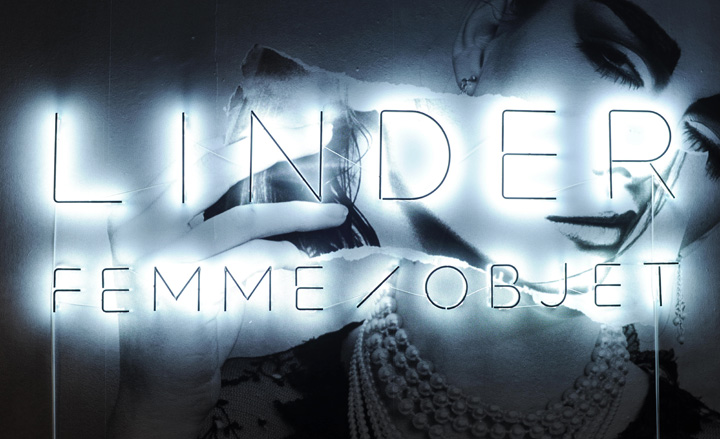
Midway through the Linder exhibition, a new show at the Musée d'Art Moderne in Paris, four words in neon glow from behind a gauzy voile curtain: Anatomy is not destiny.
Borrowed from Freud, the notion as appropriated by British artist Linder Sterling (born Linda Mulvey) seems especially fitting within the context of her highly charged collages. With the precision of a plastic surgeon and the obsession of a stalker, she grafts new eyes and lips onto existing magazine images - and not necessarily to make them prettier. Anatomy, it seems, is in the hands of the one wielding the scalpel.
As the first retrospective on Linder, the show takes us through her gritty early days in Manchester capturing the transvestites at the local Dickens Bar through her involvement with the Buzzcocks. Next, it's onto her myriad manipulations of women from magazines whom she has disfigured, masked or violated with flowers, household appliances or pastry. Pornography with a side of key lime pie: this is how she serves up the images we are fed on a daily basis but that we often fail to digest.
All the while, Linder haunts the show, first in self-portraits and the infamous video from 1978 at the Haçienda (in which she wears a meat ensemble decades before Lady Gaga); later, a series by photographer Tim Walker.
To situate the collages - frequently no larger than a magazine page - within the larger narrative on Linder-style feminism required a well-conceived mise-en-scène. Enter British design studio A Practice for Everyday Life (APFEL) and architects Carmody Groarke, past Wallpaper* Handmade collaborators who also partnered up on the recent Bauhaus show at the V&A.
'It was very important that our approach not be too overtly sexualized or political as that would have detracted from the work,' says APFEL's Stephen Osman. 'We wanted the atmospheres to be fairly ambiguous but we still wanted to allude to them.'
To that effect, grey walls and neon evoke the grittiness of Linder's Manchester period. Once we arrive at her work since 2000, we progress through a spacious winding room divided by the aforementioned curtains, which apparently suggest a certain suburban voyeurism (and, more obliquely, her hometown's former reputation as a 'Cottonopolis'). The walls are provocatively pink - by turns fleshy and Pepto-Bismol. The final series of lightbox images - their juxtaposition of porn and pastry pushed even further - has been mounted in a gallery covered in black vinyl. Does this arouse the appetite or disgust?
To each her own.

'Principle of Totality (Version I)', 2012 Courtesy of Stuart Shave/Modern Art
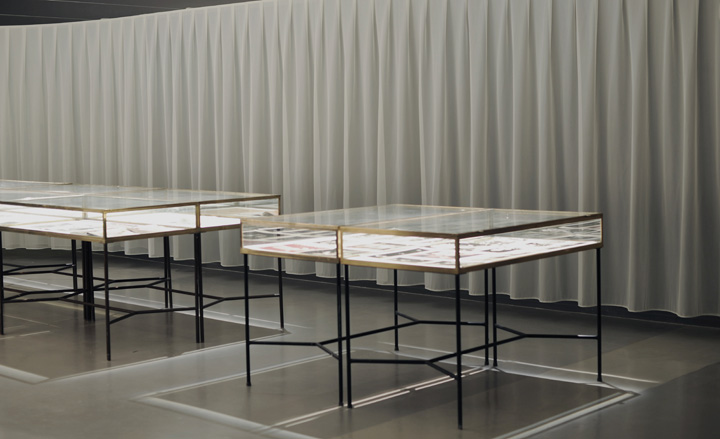
The exhibition was designed by APFEL and Carmody Groarke

Curtains lend the show a certain suburban voyeurism
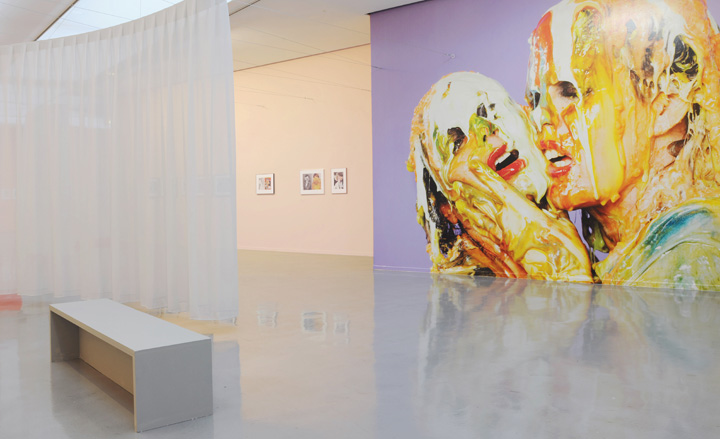
'Action Rituelle des Ancêtres', 2011Courtesy of Stuart Shave/Modern Art.
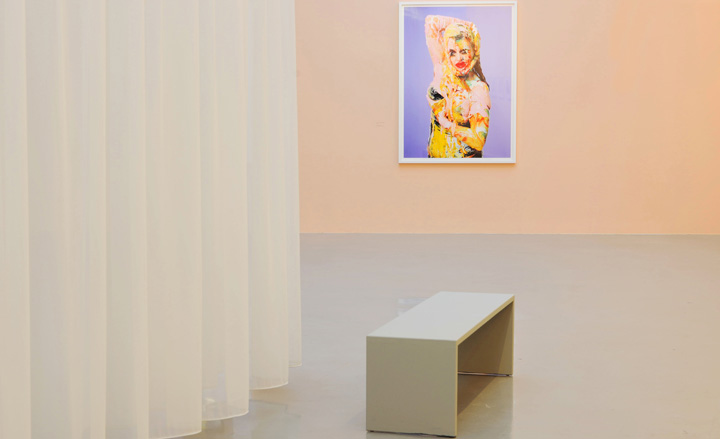
'Danse Sacrale (L'Élue)', 2011. Courtesy of Stuart Shave/Modern Art.
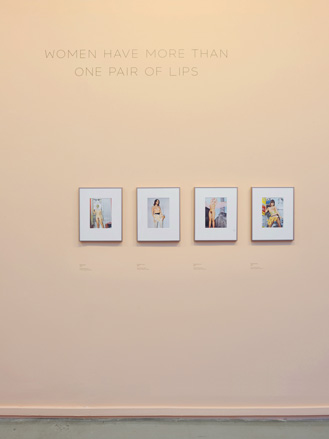
From left: 'Monogenes', 'Deceptio Visus', 'Puella Aeternus' and 'Enantiodromia', all from 2008 Courtesy of Stuart Shave/Modern Art.
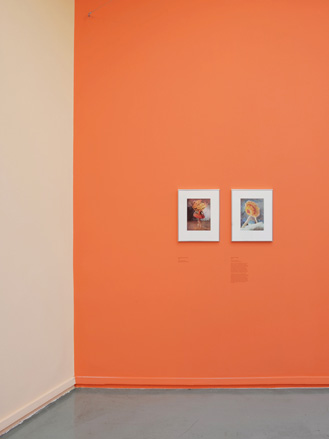
From left: 'Cakewalk Balletomane' and 'Cakewalk dégagé', all from 2010 Courtesy of Stuart Shave/Modern Art.
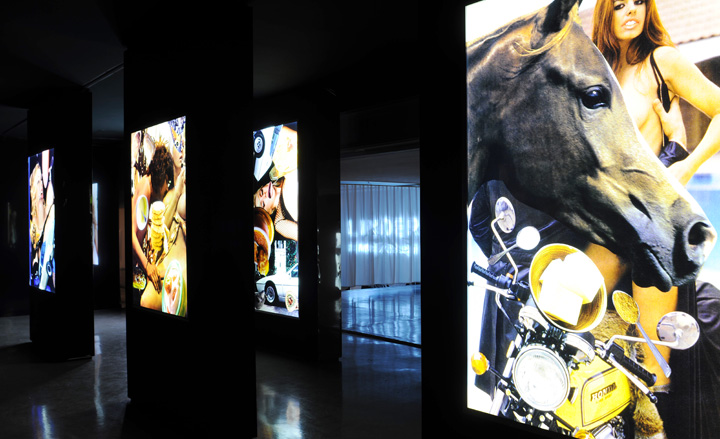
rom left: 'Sehnsucht', 'Neo-Reichian Massage', 'Home! Sweet Home!', 'Ether, God and Devil', all from 2011 Courtesy of Stuart Shave/Modern Art.
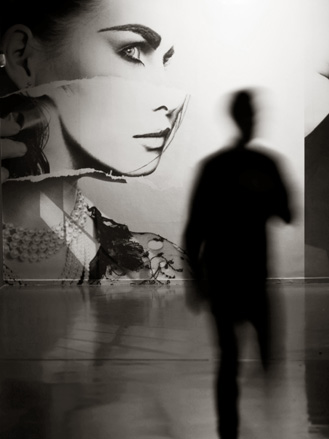
'Come find me when I'm hiding', 1981. Courtesy of Stuart Shave/Modern Art.
ADDRESS
Musée d'Art Moderne
11, avenue du Président Wilson
75116 Paris
France
Receive our daily digest of inspiration, escapism and design stories from around the world direct to your inbox.
-
 Sculptor Woody De Othello paints a Miami museum red for a show that ‘almost hugs you’
Sculptor Woody De Othello paints a Miami museum red for a show that ‘almost hugs you’The Miami-born, California-based artist opens his first museum exhibition in his hometown as an experiential journey through life and lifeless objects
-
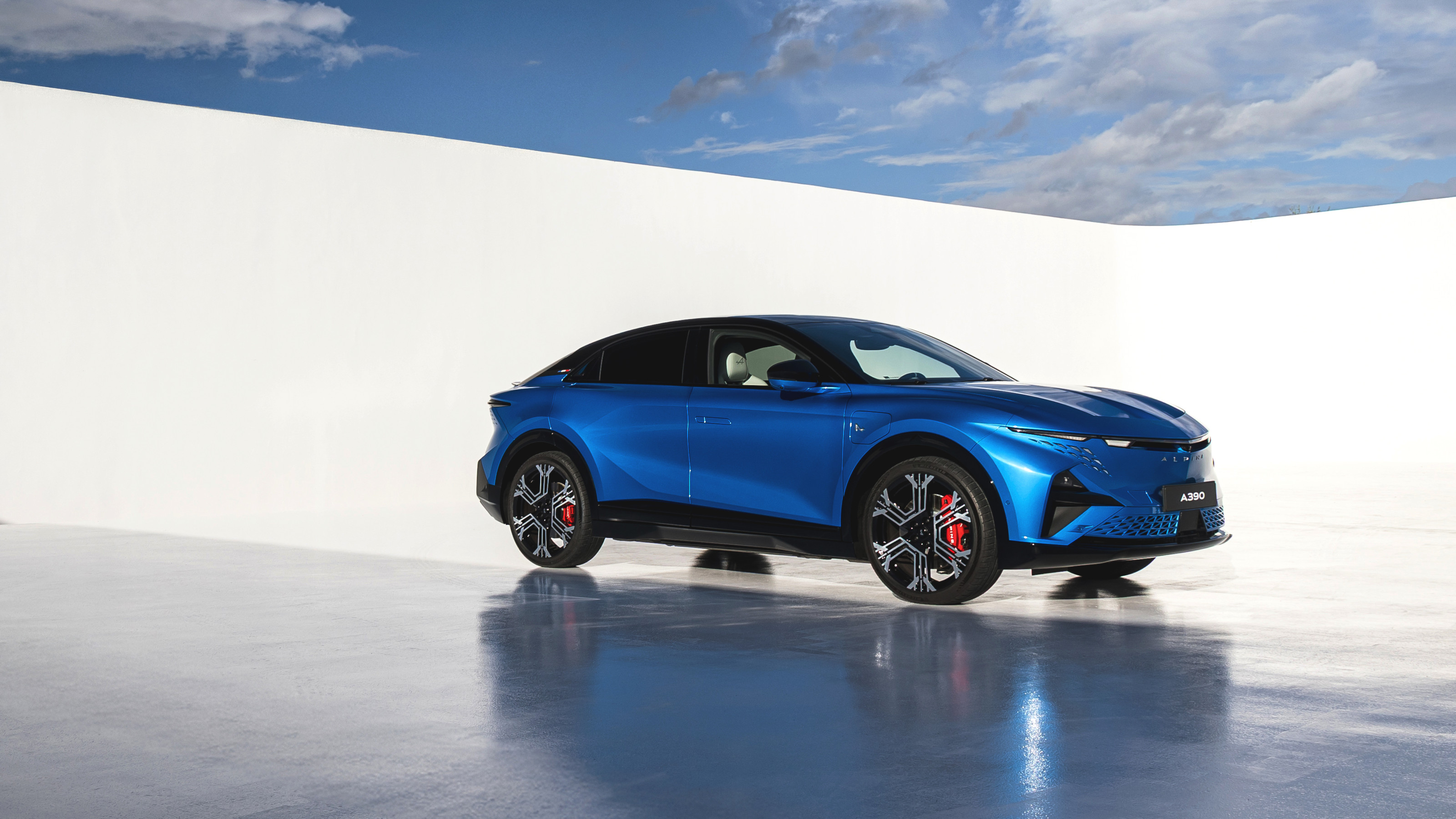 Alpine A390 GT: French, fast and fun. A sporting EV with a real sense of occasion
Alpine A390 GT: French, fast and fun. A sporting EV with a real sense of occasionAlpine doubles down on its fast electric credentials with the A390 GT, the French performance brand’s largest car to date
-
 Forget smart homes, Doma's 'intelligent' doors open at the sight of a familiar face
Forget smart homes, Doma's 'intelligent' doors open at the sight of a familiar faceYves Béhar and Jason Johnson have founded Doma, a tech start-up dedicated to seamlessly integrating tech into your daily life
-
 Out of office: the Wallpaper* editors’ picks of the week
Out of office: the Wallpaper* editors’ picks of the weekAs we approach Frieze, our editors have been trawling the capital's galleries. Elsewhere: a 'Wineglass' marathon, a must-see film, and a visit to a science museum
-
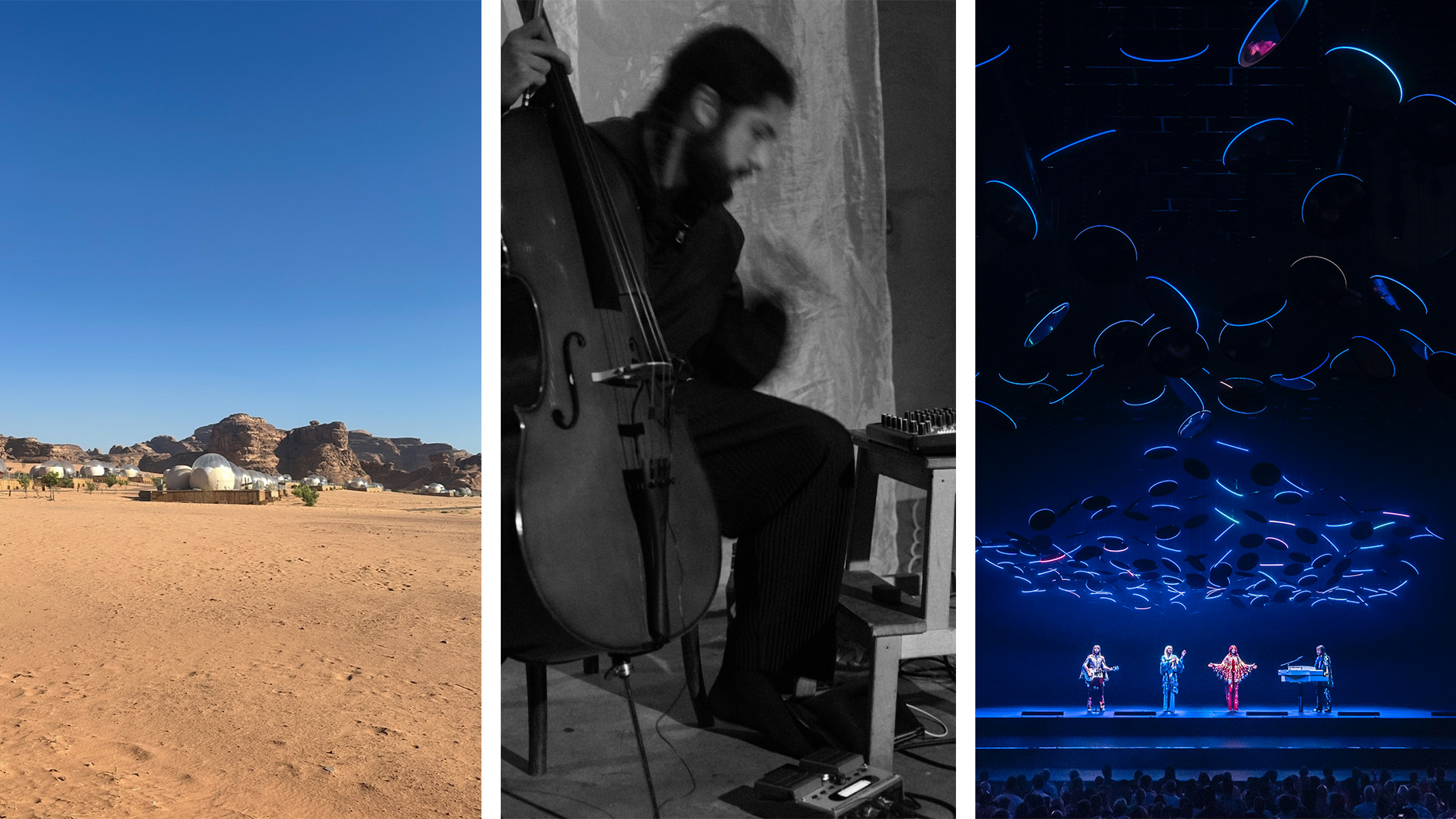 Out of office: what the Wallpaper* editors have been up to this week
Out of office: what the Wallpaper* editors have been up to this weekThis week saw the Wallpaper* team jet-setting to Jordan and New York; those of us left in London had to make do with being transported via the power of music at rooftop bars, live sets and hologram performances
-
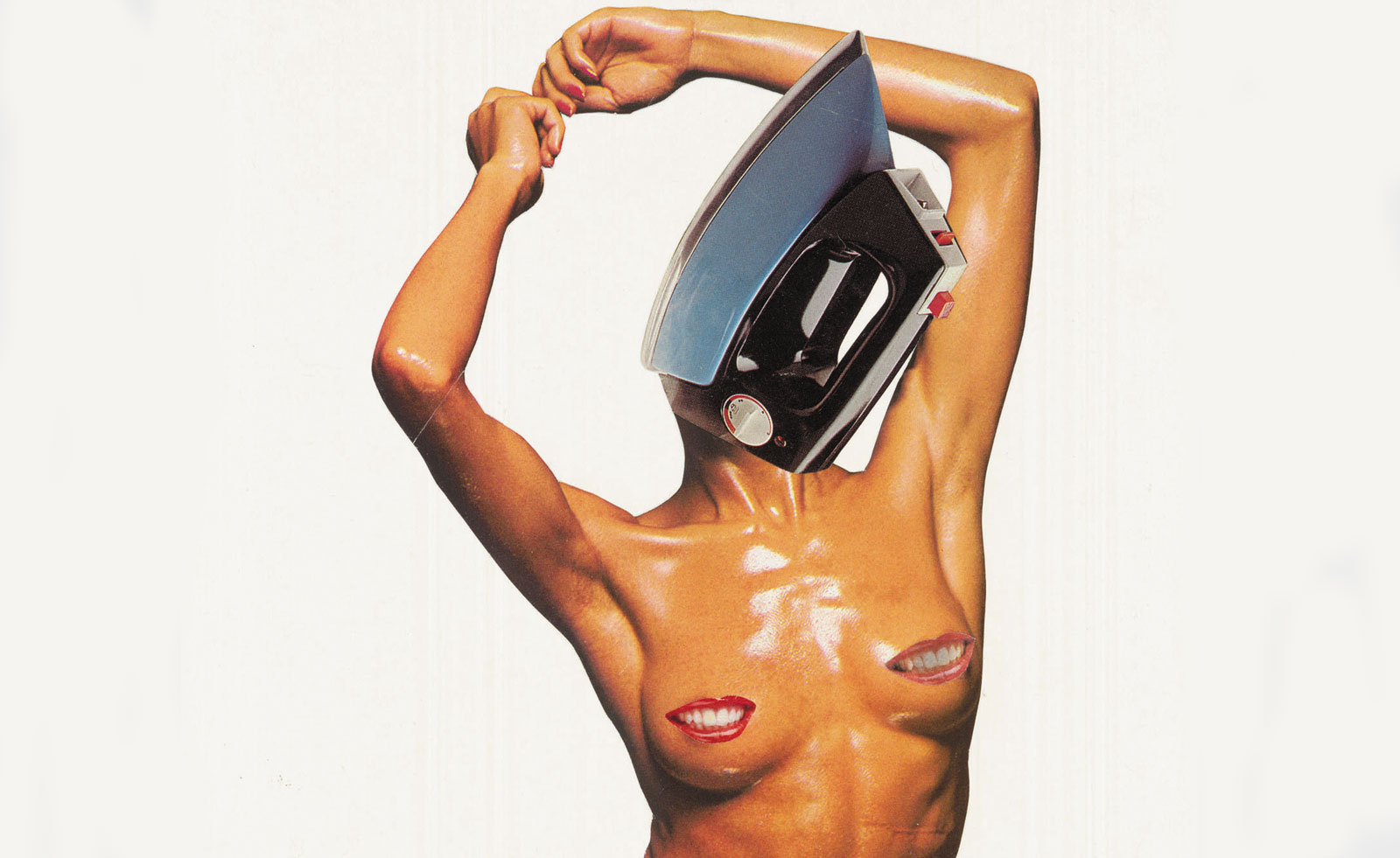 'I want to get into these images and perfume them': Linder's retrospective opens at the Hayward Gallery
'I want to get into these images and perfume them': Linder's retrospective opens at the Hayward Gallery'Linder: Danger Came Smiling' gathers fifty years of the artist's work at the Hayward Gallery. We meet the punk provocateur ahead of her first retrospective
-
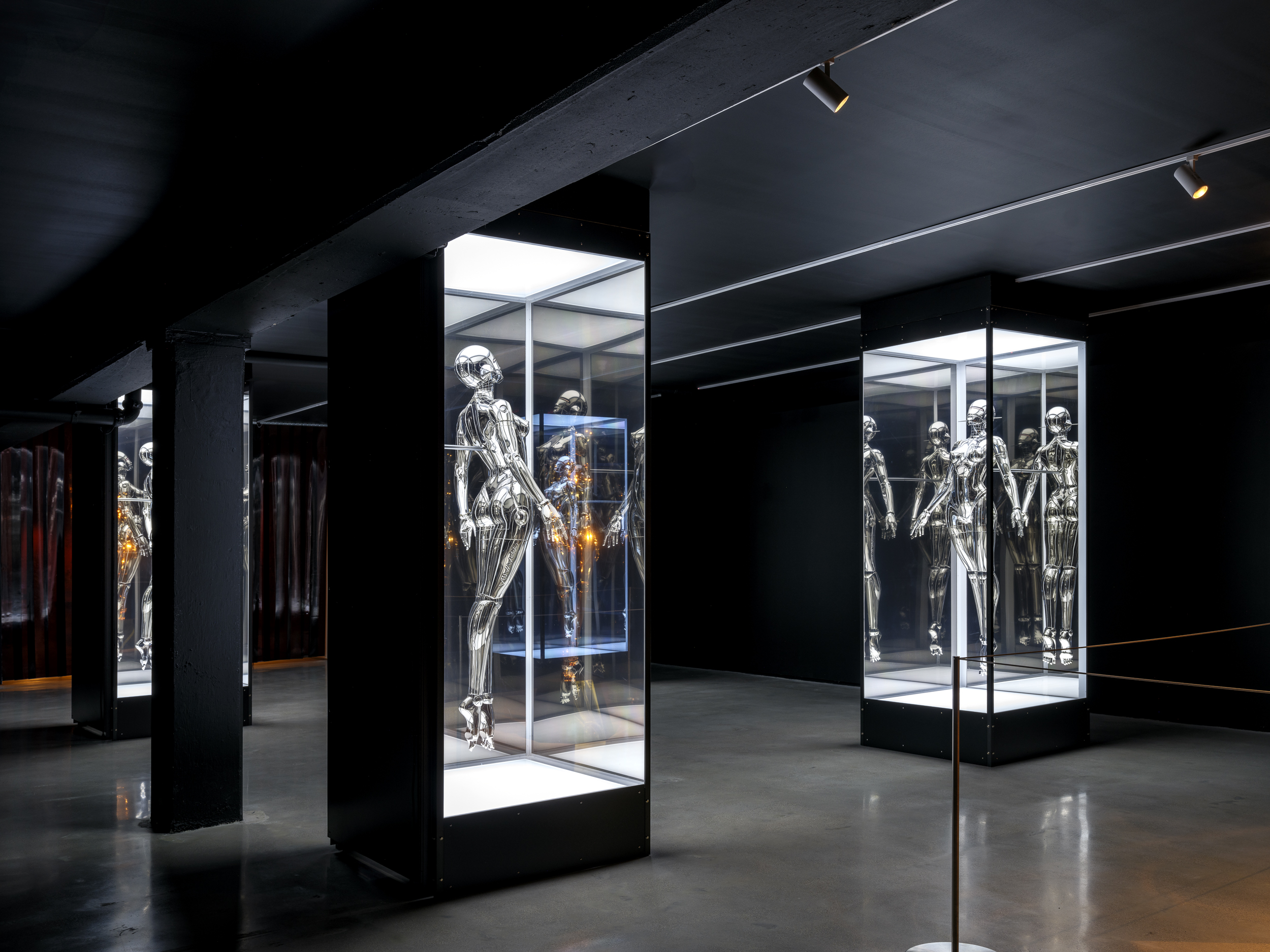 Miami’s new Museum of Sex is a beacon of open discourse
Miami’s new Museum of Sex is a beacon of open discourseThe Miami outpost of the cult New York destination opened last year, and continues its legacy of presenting and celebrating human sexuality
-
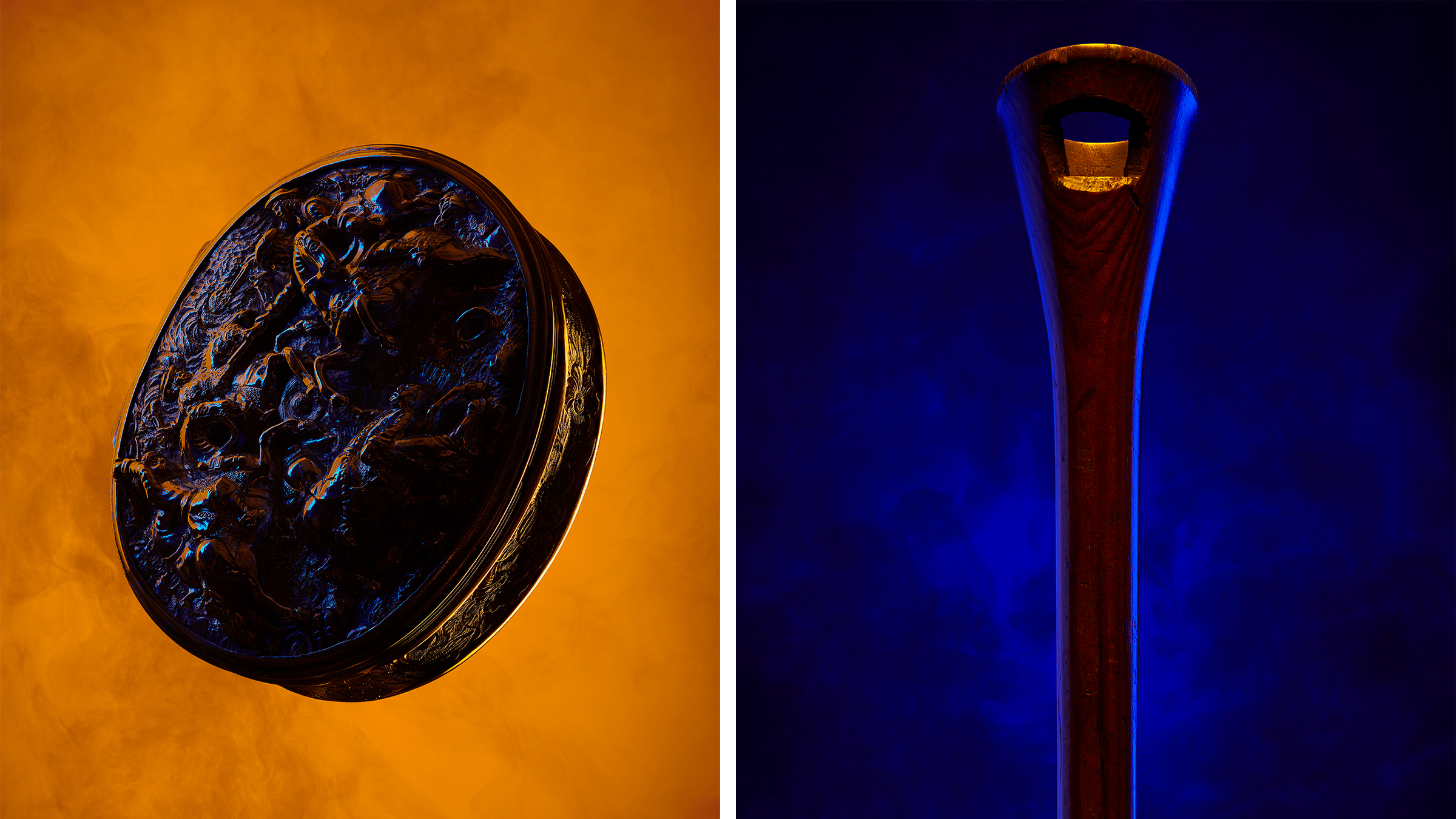 Royal College of Physicians Museum presents its archives in a glowing new light
Royal College of Physicians Museum presents its archives in a glowing new lightLondon photography exhibition ‘Unfamiliar’, at the Royal College of Physicians Museum (23 January – 28 July 2023), presents clinical tools as you’ve never seen them before
-
 Museum of Sex to open Miami outpost in spring 2023
Museum of Sex to open Miami outpost in spring 2023The Museum of Sex will expand with a new Miami outpost in spring 2023, housed in a former warehouse reimagined by Snøhetta and inaugurated with an exhibition by Hajime Sorayama
-
 Jenny Holzer curates Louise Bourgeois: ‘She was infinite’
Jenny Holzer curates Louise Bourgeois: ‘She was infinite’The inimitable work of Louise Bourgeois is seen through the eyes of Jenny Holzer in this potent meeting of minds at Kunstmuseum Basel
-
 ‘A Show About Nothing’: group exhibition in Hangzhou celebrates emptiness
‘A Show About Nothing’: group exhibition in Hangzhou celebrates emptinessThe inaugural exhibition at new Hangzhou cultural centre By Art Matters explores ‘nothingness’ through 30 local and international artists, including Maurizio Cattelan, Ghislaine Leung, Hiroshi Sugimoto, Liu Guoqiang and Yoko Ono